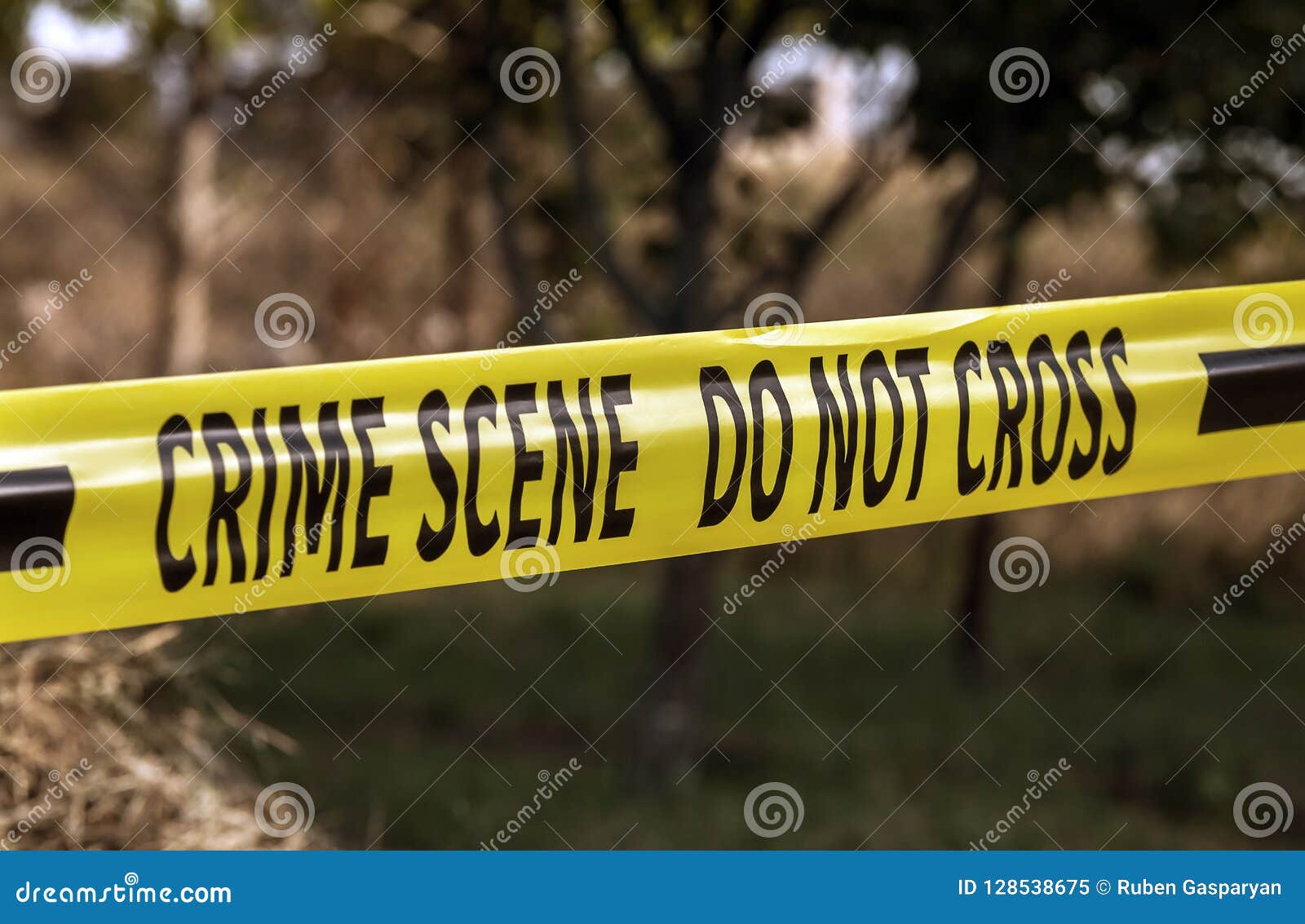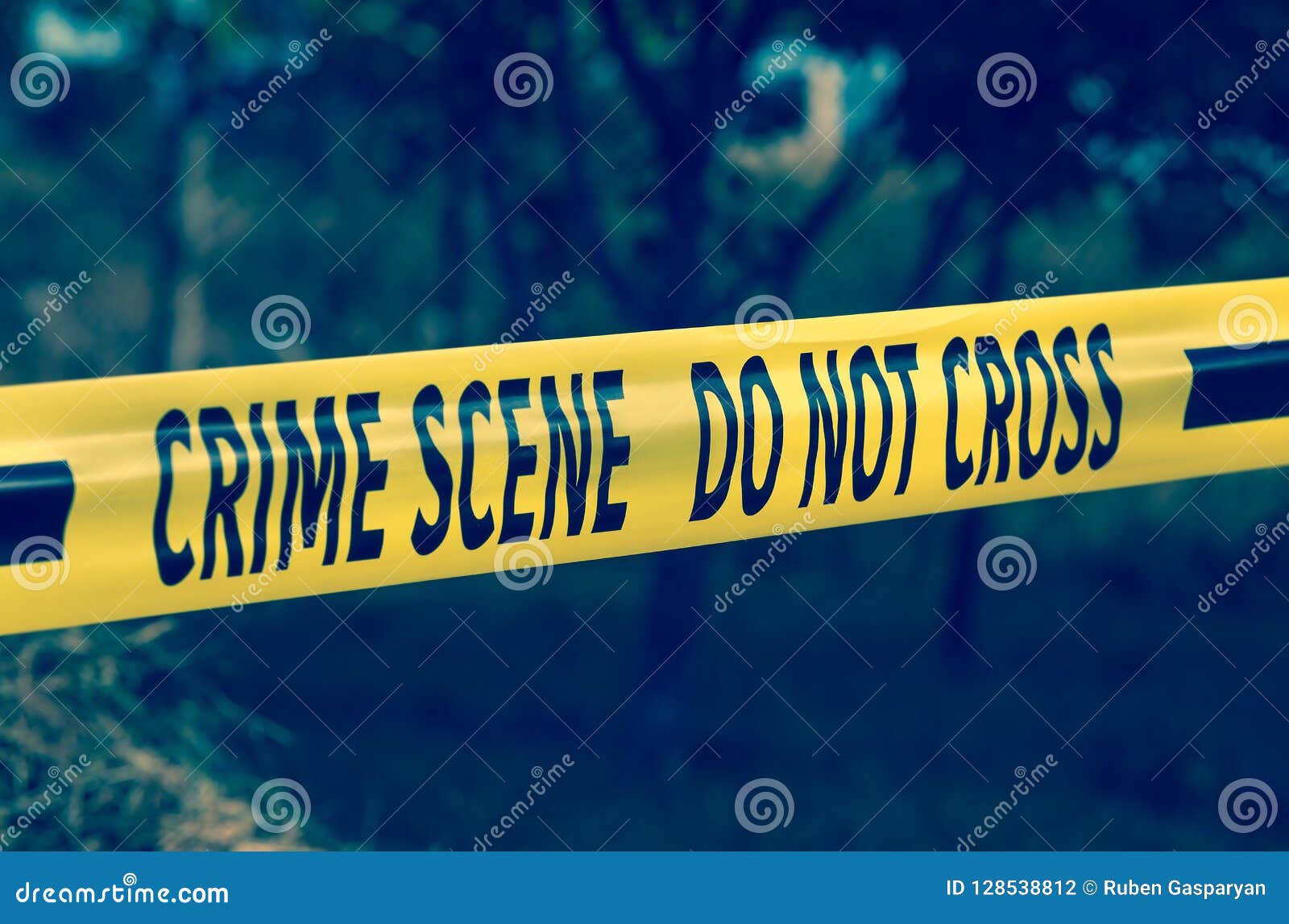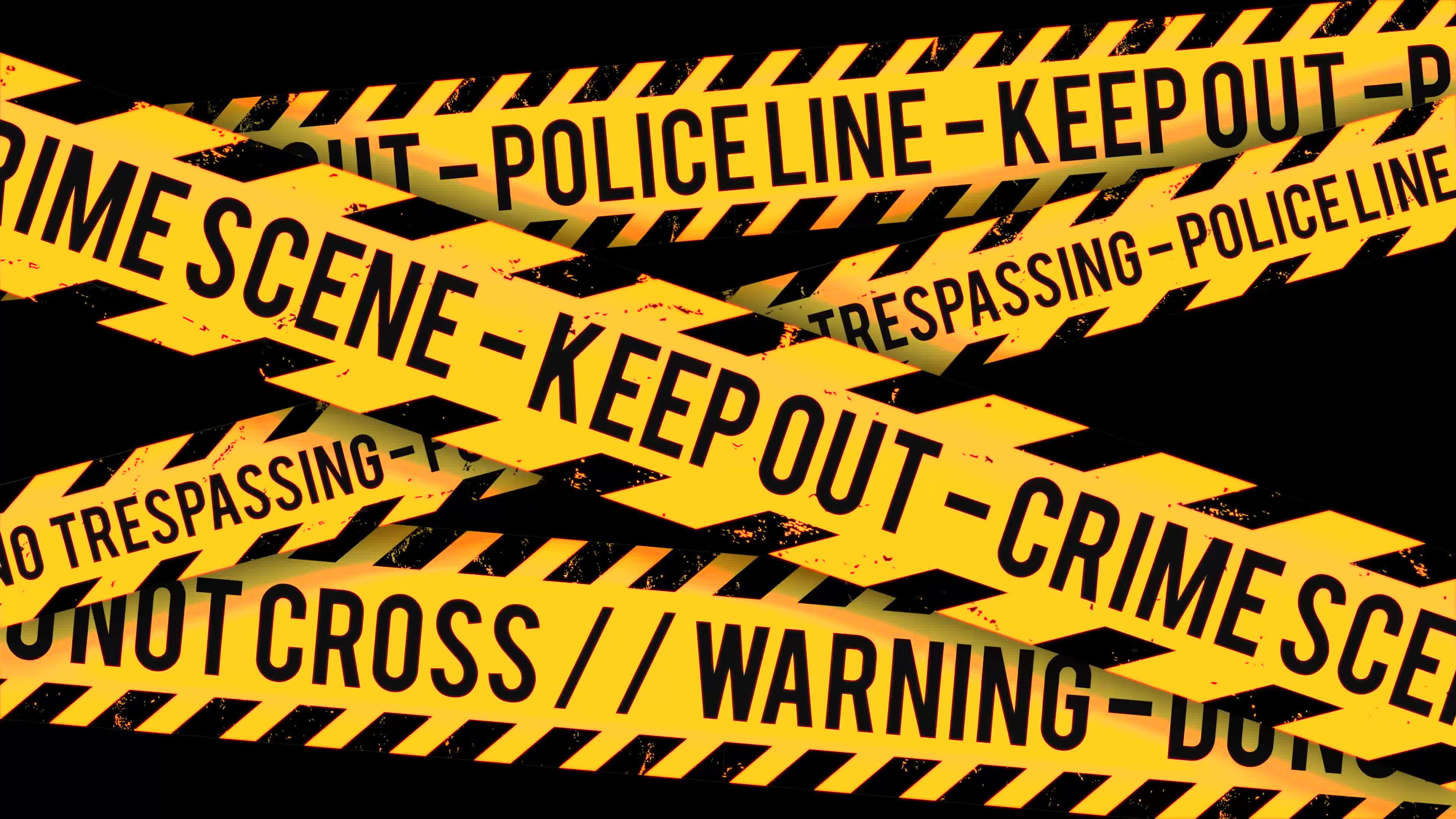Police Tape Crime Scene: The Symbol Of Mystery And Investigation
Imagine walking down the street and seeing that iconic yellow police tape fluttering in the wind. It’s not just a barrier; it’s a symbol of mystery, a sign that something serious has happened. Police tape crime scene setups are more than just tape and stakes—they’re part of a larger process that ensures justice is served. Whether you're a curious passerby or someone fascinated by crime investigation, understanding what happens behind that tape can be both intriguing and enlightening.
Police tape has become synonymous with crime scenes, and for good reason. It’s not just there to keep people out; it serves as a crucial tool for investigators to preserve evidence and maintain the integrity of the scene. But have you ever wondered how it works, what rules govern its use, or why it’s so effective? This article dives deep into the world of police tape and crime scenes, breaking down everything you need to know.
From its history to its modern applications, we’ll explore the role of police tape in criminal investigations and why it’s such an important part of law enforcement. So grab a coffee, sit back, and let’s unravel the secrets behind the yellow tape that everyone notices but few truly understand.
- Boxings Darkest Side Deaths Due To Ring Injuries A List
- Santa Claus Reindeer Pics Find Festive Images Here
What is Police Tape and Why is it Used at Crime Scenes?
Let’s start with the basics. Police tape, also known as barrier tape, is a type of warning tape used by law enforcement to mark off restricted areas. At crime scenes, this tape serves several purposes, all aimed at preserving the integrity of the area and ensuring that evidence is not tampered with. It’s not just about keeping nosy onlookers away; it’s about creating a controlled environment where investigators can do their job effectively.
One of the key reasons police tape is so effective is its visibility. That bright yellow color, often accompanied by bold black lettering, makes it impossible to miss. This visibility serves as a deterrent, warning people to stay away from the area. Additionally, the tape creates a psychological barrier, signaling that the area is off-limits and under official investigation.
But police tape isn’t just about aesthetics. It’s part of a larger protocol that includes securing the perimeter, documenting the scene, and collecting evidence. Without proper barriers, evidence could be contaminated, lost, or destroyed, jeopardizing the entire investigation. So next time you see that yellow tape, remember that it’s not just a prop—it’s a vital tool in the pursuit of justice.
- Lil Peeps Final Days Eerie Posts Amp Tragic Death Details
- Gary Oldman From Oscar To Sirius Black Beyond
The History of Police Tape Crime Scene Usage
You might think police tape has always been around, but it’s actually a relatively modern invention. The concept of marking off crime scenes dates back centuries, but the use of barrier tape as we know it today didn’t become widespread until the mid-20th century. Before then, law enforcement relied on more rudimentary methods, such as ropes, chains, or even chalk outlines, to secure areas.
One of the earliest forms of modern police tape was introduced in the 1950s. Initially used for traffic control, it quickly found its way into crime scene investigations due to its versatility and ease of use. Over the years, the design and materials have evolved, with advancements in durability, weather resistance, and visibility making today’s police tape more effective than ever.
Interestingly, the color of police tape has also changed over time. While yellow remains the most common, other colors like red, blue, and orange are used for specific purposes, such as marking hazardous materials or high-security zones. This evolution reflects the growing complexity of law enforcement and the need for specialized tools to address different scenarios.
How Police Tape Became a Symbol of Authority
As police tape became more prevalent, it also took on a symbolic role. Its presence at a crime scene sends a clear message: this is a serious matter, and the authorities are in charge. This symbolism is not accidental; it’s a deliberate effort to establish authority and maintain public order. People instinctively recognize the significance of the tape and are more likely to comply with its restrictions.
But the symbolism goes deeper than just visual impact. Police tape represents the trust we place in law enforcement to handle situations that are often chaotic and unpredictable. It’s a reminder that even in the face of tragedy, there are systems in place to ensure justice and protect the community.
Understanding the Role of Police Tape in Crime Scene Investigation
Now that we’ve covered the basics and history, let’s dive into the nitty-gritty of how police tape is used in crime scene investigations. The process begins as soon as law enforcement arrives on the scene. Officers assess the situation, determine the boundaries of the area, and deploy the tape to create a secure perimeter. This initial setup is critical, as it sets the stage for the entire investigation.
Once the tape is in place, investigators can begin their work without fear of contamination or interference. They document the scene, collect evidence, and analyze the environment to piece together what happened. During this process, the tape serves as both a physical and psychological barrier, ensuring that only authorized personnel can enter the area.
But it’s not just about keeping people out. Police tape also helps manage the flow of information. By controlling access to the scene, law enforcement can prevent misinformation from spreading and ensure that sensitive details remain confidential. This is especially important in high-profile cases where media attention can complicate the investigation.
Steps Involved in Setting Up a Police Tape Crime Scene
Setting up a crime scene with police tape involves several steps, each designed to ensure the area is properly secured. Here’s a breakdown of the process:
- Assessment: Officers evaluate the scene to determine its size and scope.
- Perimeter Establishment: Tape is deployed to create a clear boundary around the area.
- Access Control: Entry points are established, and only authorized personnel are allowed inside.
- Documentation: The scene is photographed and documented before any evidence is moved.
- Monitoring: Officers remain on site to ensure the integrity of the area is maintained.
Each step is crucial, and skipping even one can compromise the investigation. That’s why law enforcement agencies invest so much time and resources into training officers on proper crime scene management.
Legal Considerations Surrounding Police Tape Crime Scenes
While police tape is an effective tool, its use is not without legal implications. Law enforcement agencies must adhere to strict guidelines to ensure that their actions are lawful and respectful of individual rights. This includes obtaining necessary permissions, documenting all actions taken, and ensuring that the tape is removed as soon as the investigation is complete.
One of the biggest challenges is balancing the need for security with the rights of the public. While police tape can be a necessary measure, it can also be seen as intrusive or overly restrictive. This is where clear communication and transparency become essential. By explaining the reasons for the tape and keeping the public informed, law enforcement can minimize resentment and maintain trust.
Additionally, there are situations where the use of police tape can be challenged in court. For example, if evidence is deemed to have been contaminated due to improper handling, it could be excluded from legal proceedings. This highlights the importance of following proper protocols and ensuring that all actions are defensible.
Challenges Faced by Law Enforcement in Managing Crime Scenes
Managing a crime scene with police tape is not without its challenges. Officers must contend with a variety of factors, including weather conditions, public curiosity, and media pressure. In some cases, the tape itself can become a point of contention, with people questioning its necessity or feeling unfairly restricted.
Another challenge is dealing with unauthorized access. Despite the presence of police tape, some individuals may attempt to enter the scene, either out of curiosity or with malicious intent. This can lead to confrontations and further complications for law enforcement. To address these issues, officers often employ additional measures, such as increased patrols or the use of barriers, to reinforce the tape’s effectiveness.
Modern Innovations in Police Tape Technology
Technology has played a significant role in advancing the capabilities of police tape. While the basic concept remains the same, new materials and designs have made it more effective than ever. For example, some tapes now include reflective strips for better visibility at night, while others are designed to resist extreme weather conditions.
In addition to material improvements, there are also innovations in how police tape is deployed. Some agencies are experimenting with electronic barriers that can be activated remotely, allowing officers to control access with the push of a button. These advancements not only enhance security but also streamline the investigation process.
But technology isn’t just about the tape itself. Advances in forensic science have also improved the way evidence is collected and analyzed, making the entire process more efficient and accurate. Together, these innovations are transforming the way law enforcement approaches crime scene investigations.
The Future of Police Tape in Crime Scene Investigations
Looking ahead, the future of police tape holds even more promise. As technology continues to evolve, we can expect to see even more advanced solutions that enhance security and streamline operations. For example, smart tape equipped with sensors could provide real-time updates on the status of a crime scene, alerting officers to any unauthorized access or changes in the environment.
Additionally, advancements in artificial intelligence and machine learning could revolutionize how crime scenes are managed. Imagine a system that automatically analyzes data from cameras, sensors, and other sources to create a comprehensive picture of the scene. This could drastically reduce the time and resources needed for investigations, allowing officers to focus on more critical tasks.
Public Perception and the Impact of Police Tape Crime Scenes
Public perception plays a crucial role in how police tape is viewed and its effectiveness. While most people understand the need for barriers at crime scenes, there are still those who view it as excessive or unnecessary. This perception can be influenced by a variety of factors, including media portrayals, personal experiences, and cultural attitudes.
Law enforcement agencies are increasingly aware of the importance of public relations in managing crime scenes. By engaging with the community and providing clear explanations for their actions, officers can build trust and reduce misunderstandings. This approach not only improves the effectiveness of police tape but also strengthens the relationship between law enforcement and the public.
Ultimately, the goal is to strike a balance between security and accessibility. By finding this balance, law enforcement can ensure that crime scenes are properly managed while minimizing the impact on the surrounding community.
Building Trust Through Transparent Communication
Transparent communication is key to building trust between law enforcement and the public. When officers take the time to explain the reasons for police tape and its role in investigations, people are more likely to understand and support its use. This can lead to smoother operations and fewer conflicts during investigations.
Additionally, involving the community in discussions about crime prevention and safety can foster a sense of collaboration and shared responsibility. By working together, law enforcement and the public can create safer environments and reduce the need for restrictive measures like police tape.
Conclusion: The Importance of Police Tape in Crime Scene Investigations
In conclusion, police tape plays a vital role in crime scene investigations, serving as both a physical and psychological barrier that ensures the integrity of the area. From its humble beginnings as a traffic control tool to its current status as a symbol of authority, police tape has evolved to meet the needs of modern law enforcement. Its effectiveness lies not just in its visibility but in the protocols and technologies that support its use.
As we’ve seen, the use of police tape involves a complex interplay of legal, technical, and social factors. Law enforcement agencies must navigate these challenges while maintaining public trust and ensuring justice is served. By embracing innovation and fostering open communication, they can continue to improve the way crime scenes are managed and contribute to a safer society.
So the next time you see that yellow tape fluttering in the wind, remember the story behind it. It’s not just a barrier; it’s a symbol of the dedication and expertise that goes into every investigation. And if you’re curious to learn more, feel free to leave a comment or share this article with others who might find it interesting. Together, we can deepen our understanding of the world of crime scene investigations and the tools that make it possible.
Table of Contents
- What is Police Tape and Why is it Used at Crime Scenes?
- The History of Police Tape Crime Scene Usage
- Understanding the Role of Police Tape in Crime Scene Investigation
- Legal Considerations Surrounding Police Tape Crime Scenes
- Modern Innovations in Police Tape Technology
- Public Perception and the Impact of Police Tape Crime Scenes
- How Police Tape Became a Symbol of Authority
- Steps Involved in Setting Up a Police Tape Crime Scene
- Challenges Faced by Law Enforcement in Managing Crime Scenes
- The Future of Police Tape in Crime Scene Investigations



Detail Author:
- Name : Idella Huel II
- Username : ylynch
- Email : bosco.ana@gmail.com
- Birthdate : 1974-06-27
- Address : 83877 Kuhn Plaza Casimerland, KY 96642
- Phone : 737-519-6124
- Company : Armstrong, Sipes and Kohler
- Job : Engineering Manager
- Bio : Doloribus reiciendis cumque amet sit velit quidem nemo. Excepturi non vel voluptatem veritatis perferendis rerum eos sit. Tempora vero sed ea officia qui nulla. Quia amet corrupti quaerat.
Socials
facebook:
- url : https://facebook.com/hudsonb
- username : hudsonb
- bio : Odio nam ut eveniet. Quaerat sapiente autem repudiandae ut non eum tempore.
- followers : 1583
- following : 512
twitter:
- url : https://twitter.com/boris.hudson
- username : boris.hudson
- bio : Labore molestiae rerum blanditiis omnis. Dicta hic nihil aut magni cupiditate. Velit sapiente quam ducimus sed.
- followers : 1808
- following : 696
instagram:
- url : https://instagram.com/bhudson
- username : bhudson
- bio : Qui in perferendis repellendus cupiditate optio voluptas. Similique ut similique est sint sed sit.
- followers : 4554
- following : 2091
linkedin:
- url : https://linkedin.com/in/hudsonb
- username : hudsonb
- bio : Quasi vitae hic officia ipsum rerum illo.
- followers : 4603
- following : 757